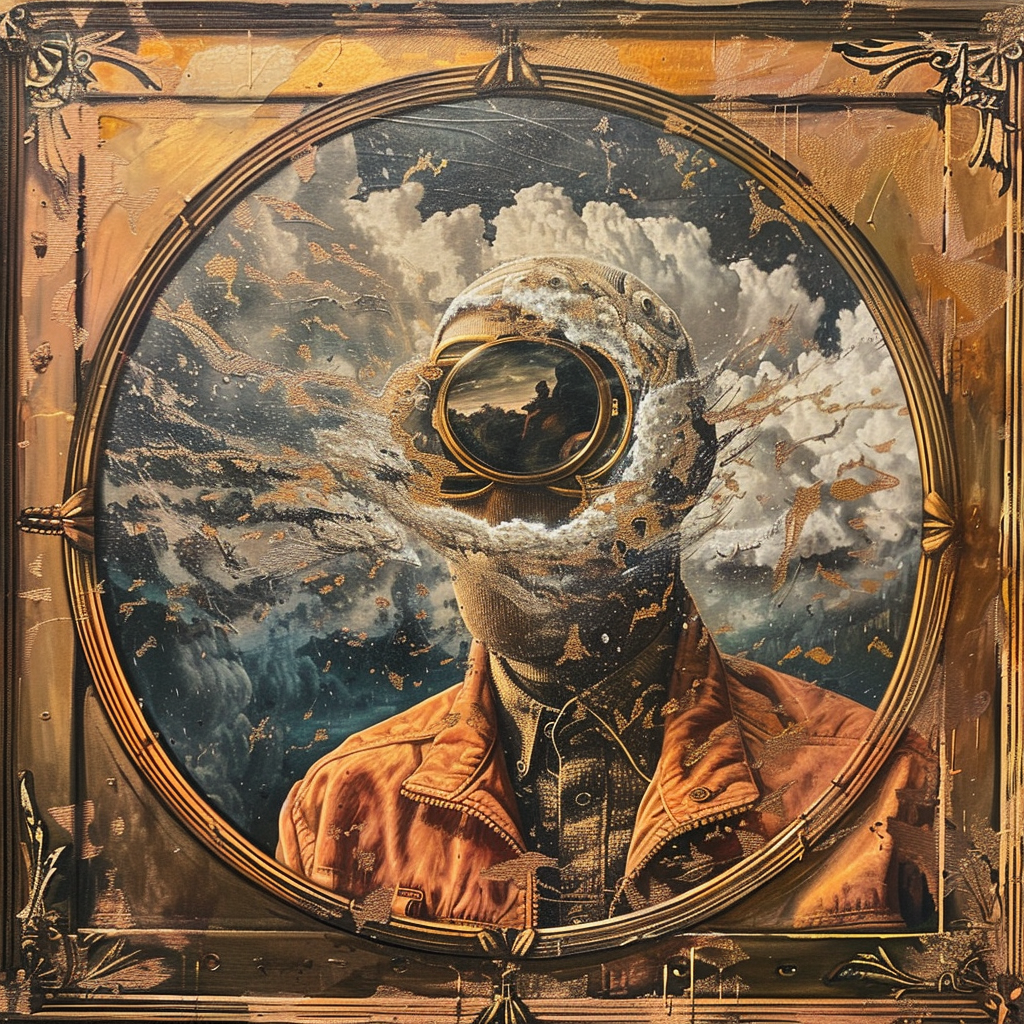To most, Harold Finchley was the embodiment of a dedicated scientist; to Harold, he was merely playing a part.
In the bustling world of scientific academia, Professor Harold Finchley was a familiar face, jet-setting from one conference to another, his reputation burnished by decades of research and an imposing list of publications. Yet, beneath the sheen of his professional success, Harold harboured a secret indifference to the physics that defined his career.
From Tokyo to Toronto, his travels were a blur of seminars, symposiums, and endless networking. However, it was in the quiet moments alone in his hotel rooms or seated in the back of a conference hall that Harold truly felt alive. There, armed with stolen napkins and a set of worn oil pastels, he would lose himself in art. Each stroke was a silent rebellion against the scientific jargon that filled his days. These napkins captured vivid landscapes, abstract patterns, and sometimes, the lonely gaze of a man who felt trapped in his life’s accidental trajectory.
Occasionally, Harold’s peculiar habit of collecting napkins raised eyebrows among hotel staff or conference organizers. Once, during a bustling dinner at a conference in Vienna, he had just discreetly pocketed several colorful napkins when a waiter approached him, curiosity plain on his face.
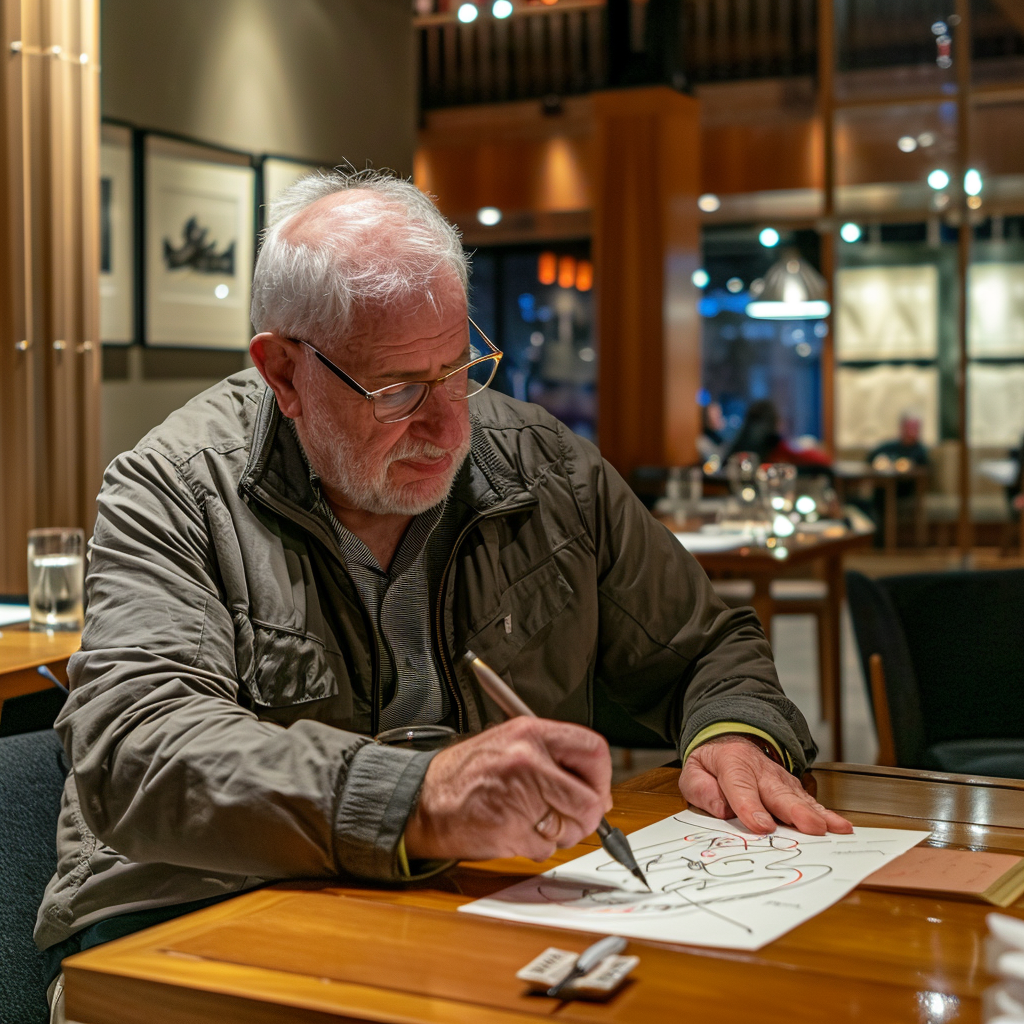
“Excuse me, sir,” the waiter began, his gaze flicking to the bulge in Harold’s pocket, “but might you be needing more napkins? I see you’ve taken quite a few.”
Harold, caught in the act but undeterred, chuckled nervously and patted his pocket. “Ah, you see, I have this terribly inconvenient runny nose,” he explained, drawing a napkin to dab demonstratively at his nose. “Allergic reactions—they can strike at the most inopportune moments!”
The waiter nodded, a hint of amusement in his smile as he decided to let the matter slide. “Of course, sir. Do let me know if you need anything else.”
In a different city, this time a hotel in San Francisco, Harold’s request for multiple envelopes raised the receptionist’s eyebrows as she handed them over. “Planning to send some letters?” she asked, her tone light yet probing.
Harold, ever the storyteller, adjusted his glasses and sighed dramatically. “Actually, it’s my eyes. Terrible allergies make them water so,” he said, giving a rueful shake of his head. “I need the envelopes to keep my… uh, allergy medications organized and dry.”
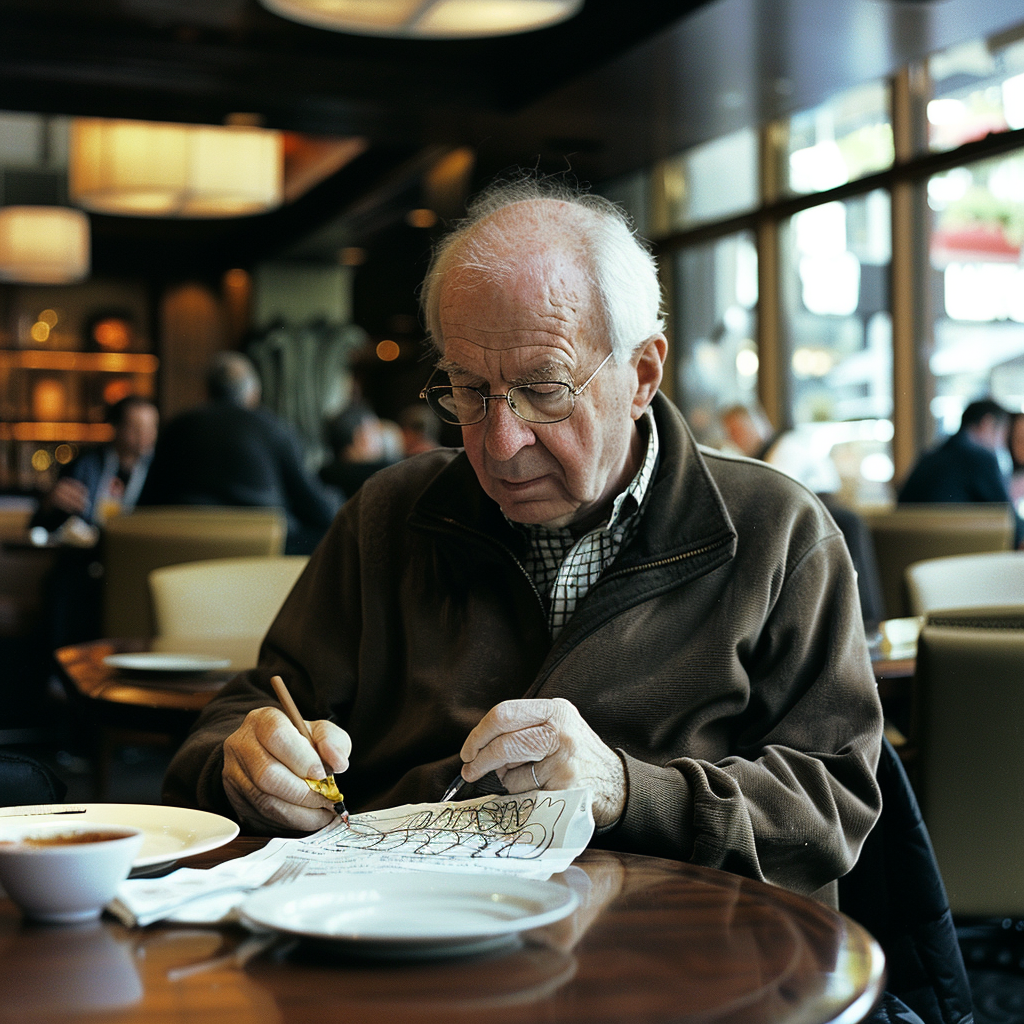
The receptionist’s suspicion seemed to melt into sympathy as she nodded understandingly. “I see, I hope they help then. San Francisco can really stir up the allergies this time of year.”
These little interactions were Harold’s private theatre, small but significant moments where his creativity sparked amidst the mundane. Each time he spun these tales, Harold felt a rush of quiet exhilaration, knowing his artistic life was kept secreted away in the simplest of disguises.
Back in London, each colourful napkin, a canvas of Harold’s secret creativity, was carefully placed into its own envelope. On each, he meticulously noted the date of creation, a title for the artwork, and a sequence number. These envelopes were then stowed away in an old cardboard box, inconspicuously hidden beneath a stack of seldom-read physics journals in his study. Harold never spoke of these artistic treasures to anyone; they were a part of him that seemed out of place in the scientific world he had constructed around himself. To him, each piece of art was a sanctuary, a silent testament to an unexplored life that existed parallel to his public persona.
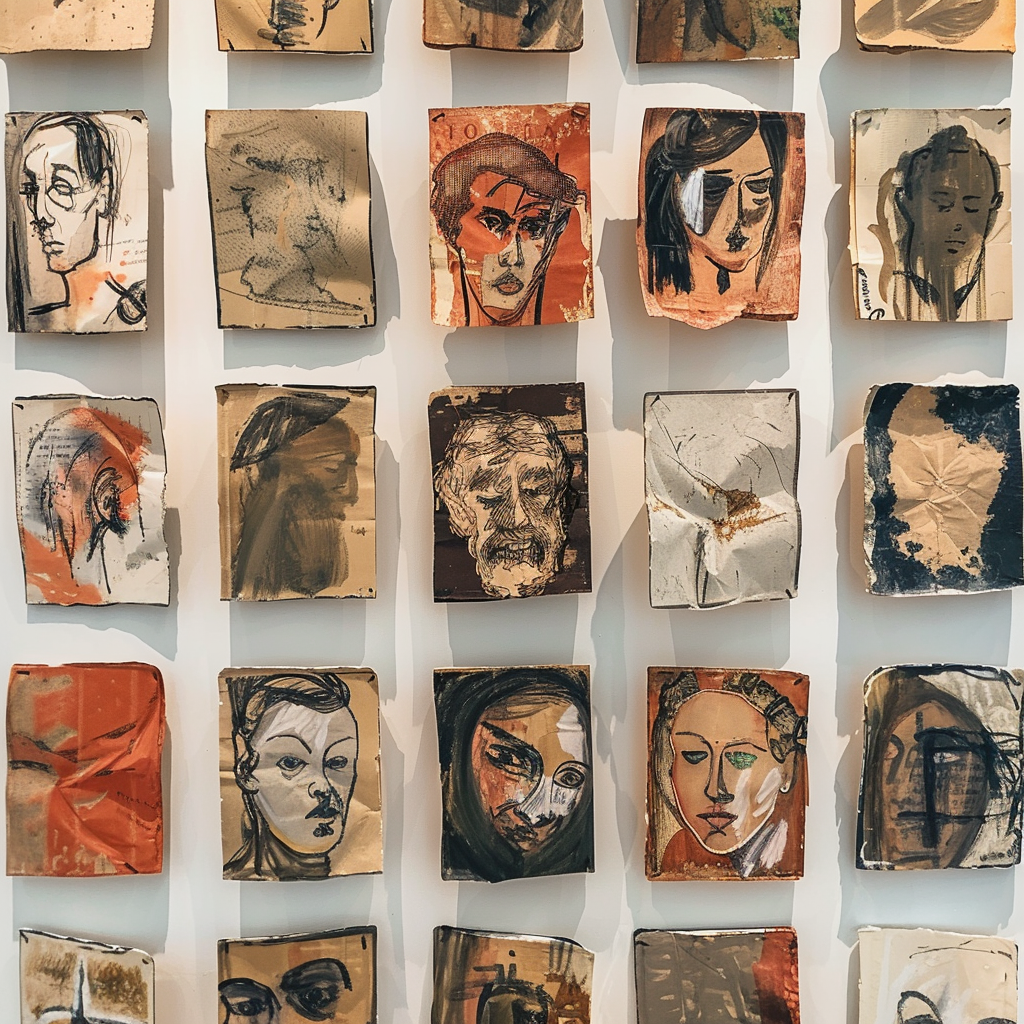
Harold’s collection of napkin artworks covered a diverse range of subjects, yet all were tied together by a common element: the wind. Landscapes depicted trees bent in arcing bows, their leaves fluttering chaotically as if caught in a gust. Oceans were never still; waves crested with frothy tops, driven by unseen gales across the napkin canvases. Even his cityscapes had papers flying and loose fabrics billowing, capturing the unseen force of the wind in everyday urban life.
The portraits, too, bore this hallmark. Each face Harold painted was touched by the wind; hair swept back and garments ruffled, giving life to the static medium. These figures often appeared to be in the midst of serene contemplation or facing into the breeze, eyes closed, as if feeling the world through the air around them.
This fascination with wind wasn’t just an artistic motif but a bridge to his professional life as a physicist. Harold had spent years studying the dynamics of air movements, publishing papers on wind energy and its potential applications. In his art, he explored this interest through a more poetic lens, using the wind as a metaphor for the unseen forces that shape our lives and environments.
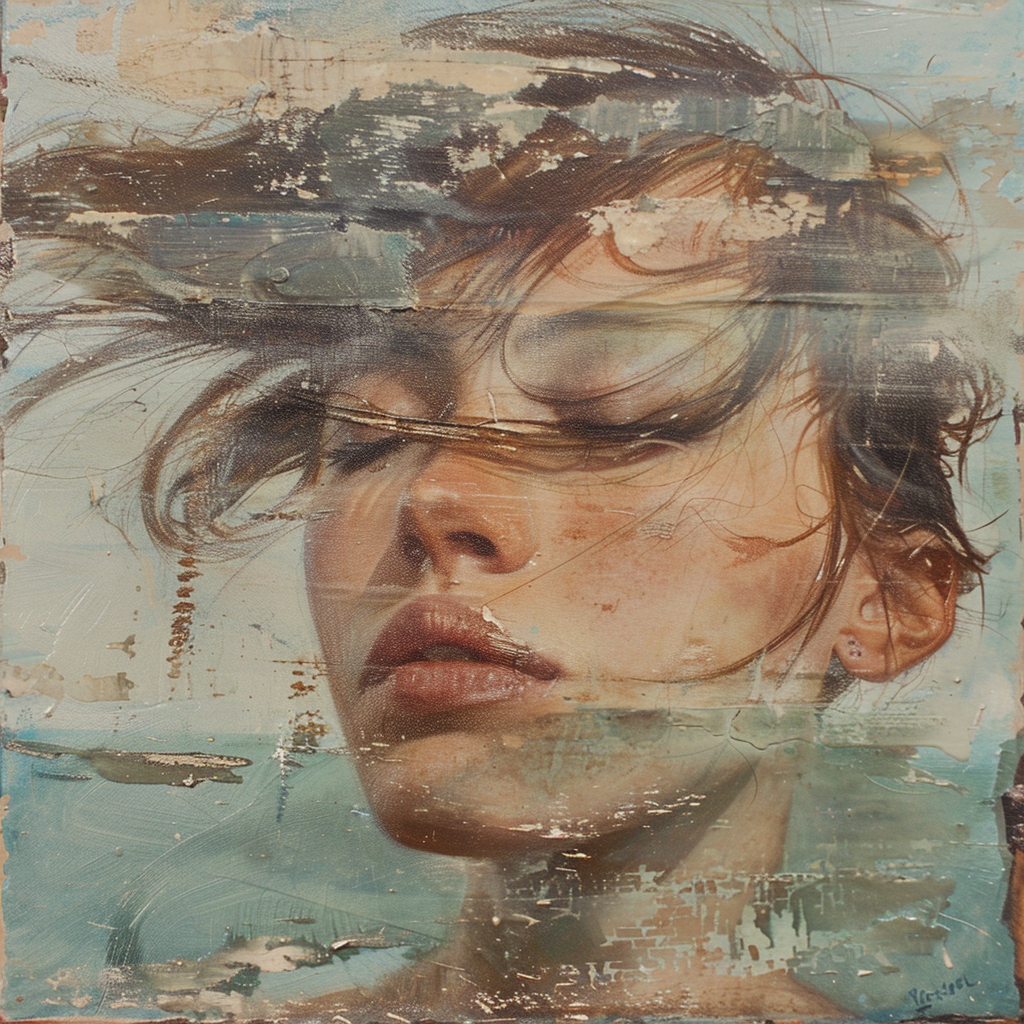
Each piece, though simple in its medium, conveyed a deep appreciation and understanding of the wind’s power and beauty. The way Harold integrated his scientific passions with his artistic expressions offered a unique perspective, merging the analytical with the abstract. This blend of science and art not only enriched the visual impact of his work but also deepened the narrative behind each napkin, making the collection profoundly personal and universally resonant.
Years passed, and Harold continued his dual existence until his death as a distinguished professor of physics. The world mourned the loss of a great scientist, but it was his daughter, Emma, who discovered the true Harold Finchley. While sorting through his belongings, she found the box stuffed with thousands of napkins, each a burst of colour and emotion. Emma was deeply moved by the beauty and raw honesty of her father’s secret artwork.
One afternoon, as Emma sifted through the colourful array, she called her mother into the study. “Mum, did you know about these?” she asked, spreading out several vividly painted napkins.
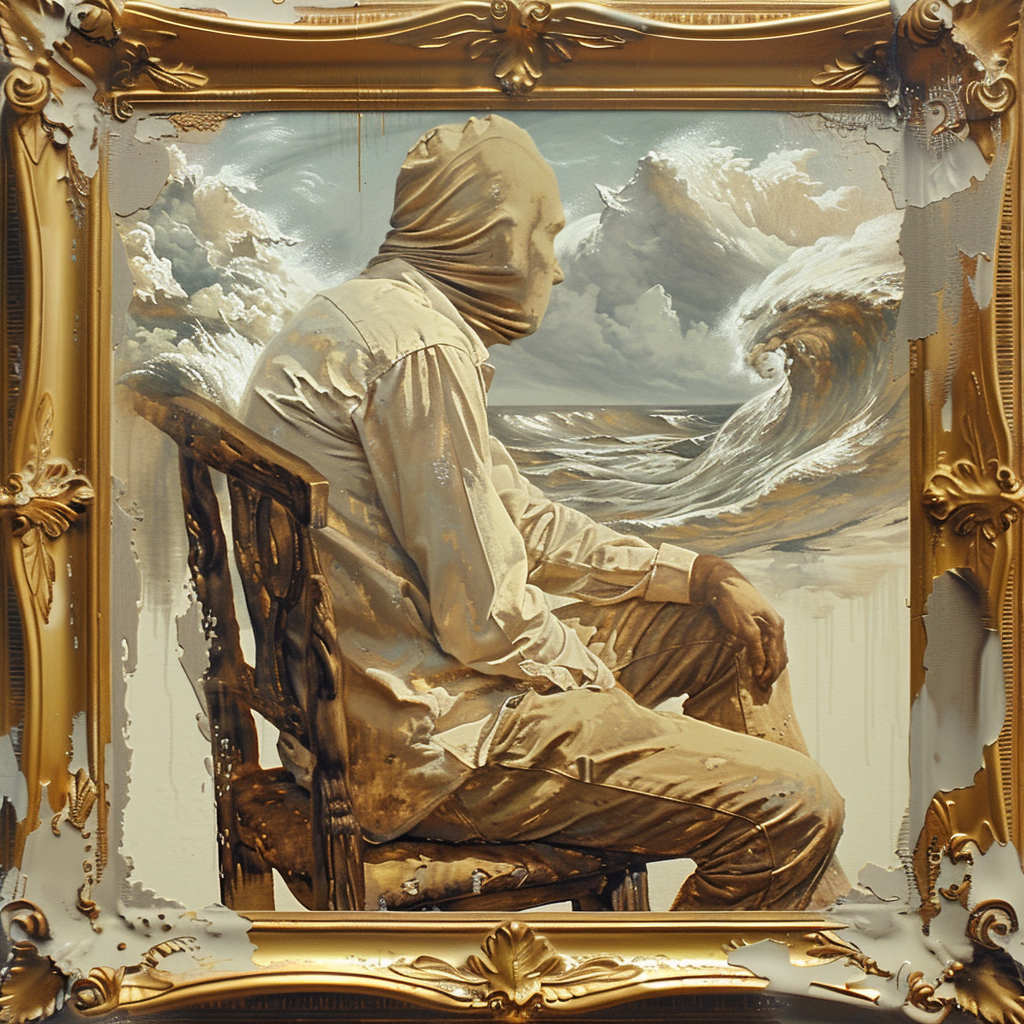
Her mother, peering over her glasses, shook her head in bewilderment. “I never knew he painted. Harold always tucked himself away in here with his journals… I thought they were all about physics,” she murmured, her voice tinged with surprise and a hint of sadness.
“Look at these, Mum. Each one has a date, a title—even a number. It’s like he was leading a whole other life through these,” Emma said, her fingers gently tracing the outlines of a particularly striking landscape.
Her mother sighed, a soft smile playing on her lips as she picked up a napkin depicting a serene lake scene. “Your father always was full of surprises. But this, this is something else entirely,” she replied, her eyes reflecting a complex mix of emotions as she reconsidered the man she had thought she knew so well.
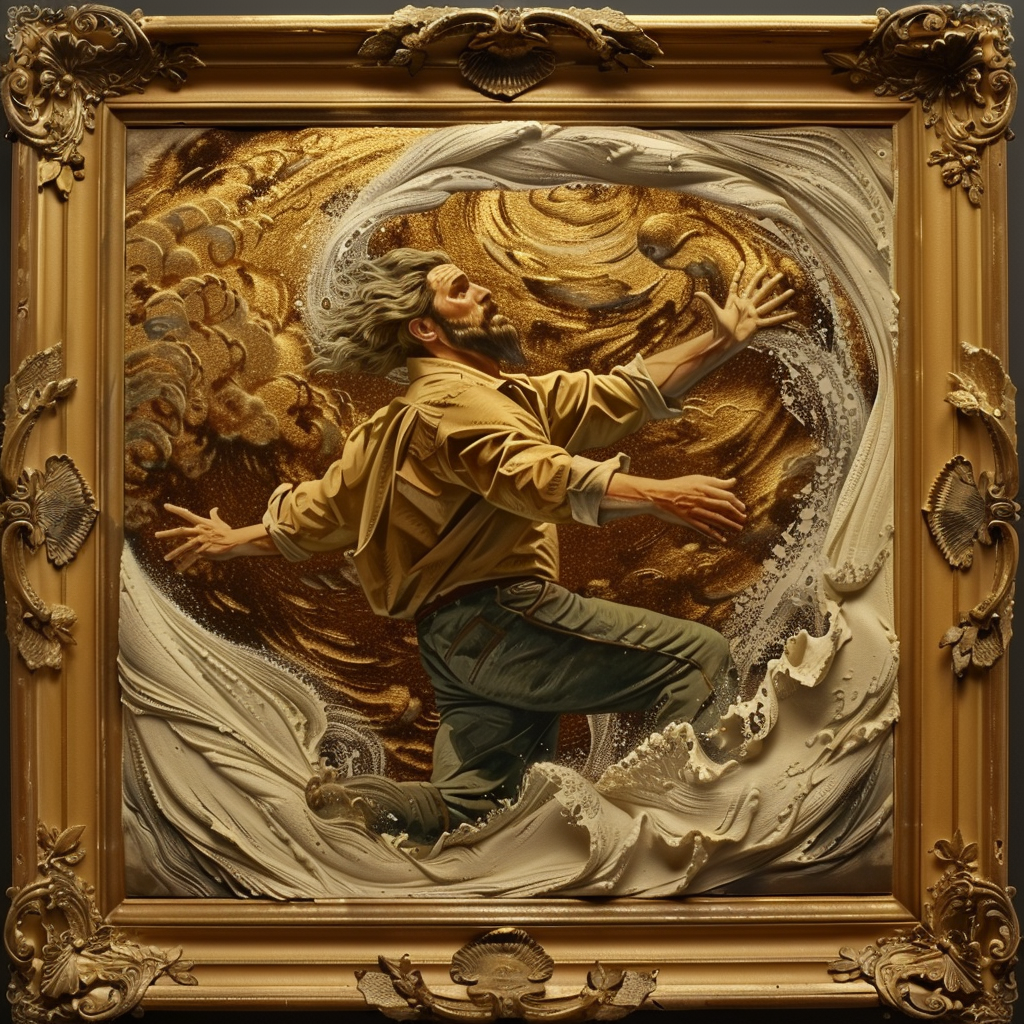
Determined to share this unknown side of Harold with the world, Emma worked tirelessly to publish the napkins. The collection, titled “The Hidden Palette of Professor Finchley,” captured the hearts of millions worldwide. Harold Finchley became a posthumous sensation not for his scientific endeavours but for his vibrant art that spoke to the beauty of pursuing one’s true passion. The profound impact of his work reached its zenith when the collection was put on display at the Tate Modern. Admirers from across the globe flocked to see the unexpected artistry of a physicist, and soon, private collectors began purchasing individual pieces for millions of pounds. Harold’s secret passion, once hidden away in a dusty box under piles of academic journals, had not only found the light but had ignited a fervent bidding frenzy, immortalizing him as an artist in the annals of modern art history.
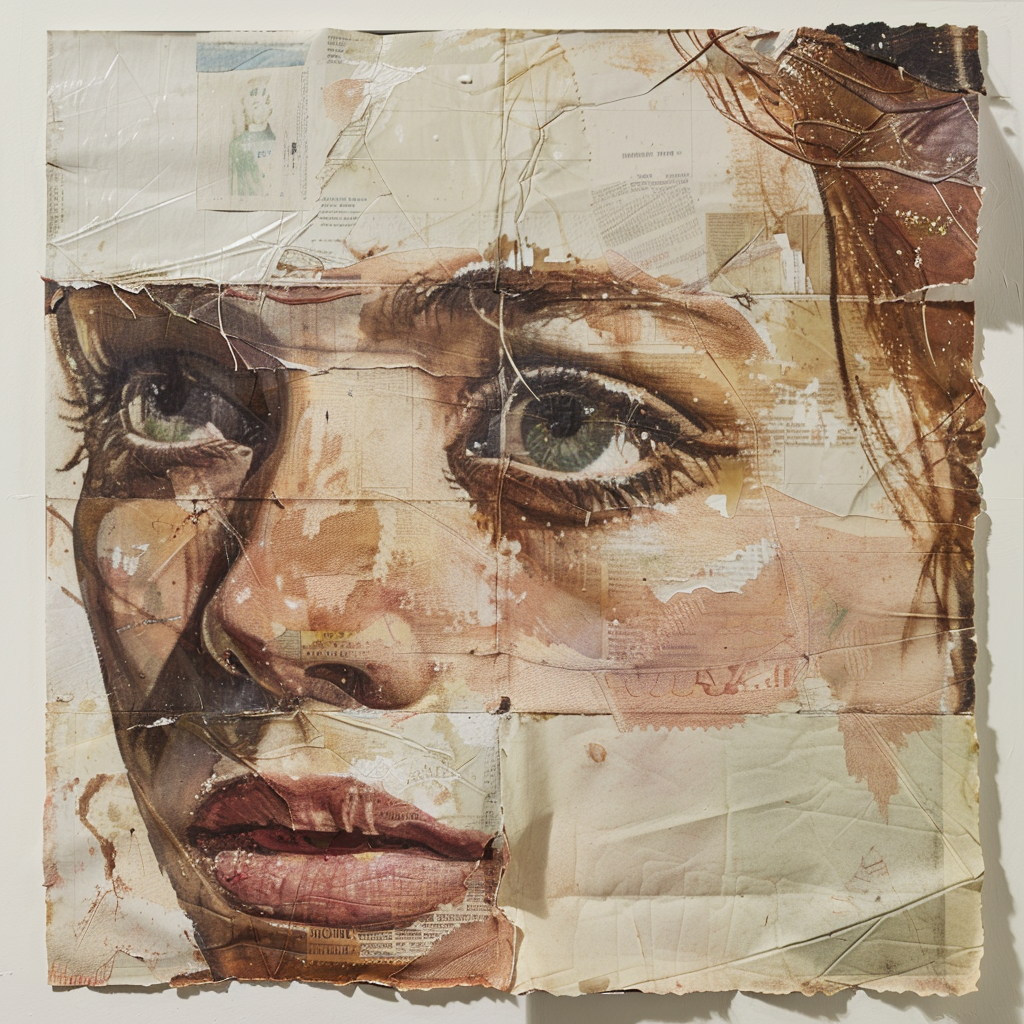
All images generated using Midjourney
